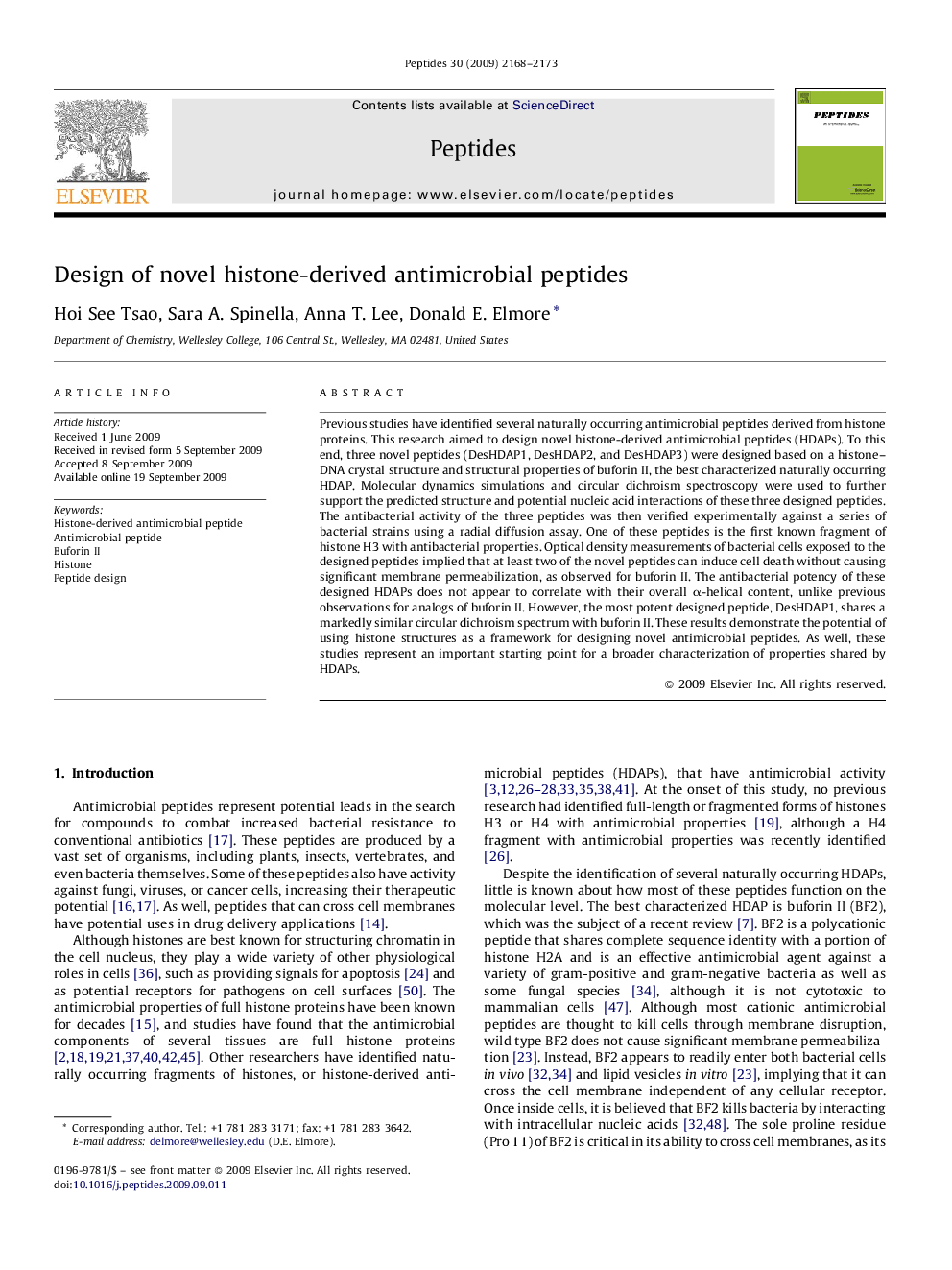| Article ID | Journal | Published Year | Pages | File Type |
|---|---|---|---|---|
| 2007038 | Peptides | 2009 | 6 Pages |
Previous studies have identified several naturally occurring antimicrobial peptides derived from histone proteins. This research aimed to design novel histone-derived antimicrobial peptides (HDAPs). To this end, three novel peptides (DesHDAP1, DesHDAP2, and DesHDAP3) were designed based on a histone–DNA crystal structure and structural properties of buforin II, the best characterized naturally occurring HDAP. Molecular dynamics simulations and circular dichroism spectroscopy were used to further support the predicted structure and potential nucleic acid interactions of these three designed peptides. The antibacterial activity of the three peptides was then verified experimentally against a series of bacterial strains using a radial diffusion assay. One of these peptides is the first known fragment of histone H3 with antibacterial properties. Optical density measurements of bacterial cells exposed to the designed peptides implied that at least two of the novel peptides can induce cell death without causing significant membrane permeabilization, as observed for buforin II. The antibacterial potency of these designed HDAPs does not appear to correlate with their overall α-helical content, unlike previous observations for analogs of buforin II. However, the most potent designed peptide, DesHDAP1, shares a markedly similar circular dichroism spectrum with buforin II. These results demonstrate the potential of using histone structures as a framework for designing novel antimicrobial peptides. As well, these studies represent an important starting point for a broader characterization of properties shared by HDAPs.
